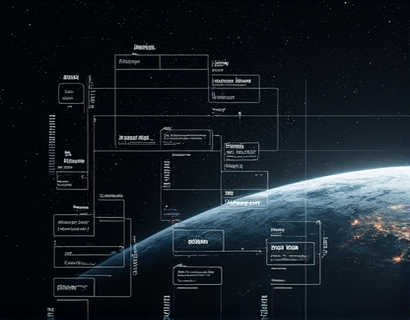Maximizing Leadership Efficiency: A Comprehensive Dashboard for Streamlined Team Management and Enhanced Productivity
In today's fast-paced business environment, effective leadership is crucial for driving success and maintaining a competitive edge. For business leaders and organizational managers, managing large and diverse teams can be a daunting task. The complexity of overseeing multiple departments, ensuring seamless communication, and making informed decisions can often lead to inefficiencies and bottlenecks. To address these challenges, a comprehensive dashboard has been developed, designed to streamline team management and enhance productivity across various industries. This advanced tool is not just a management solution but a strategic asset that empowers leaders to optimize their processes and achieve outstanding results.
The need for an efficient leadership dashboard stems from the growing complexity of modern organizations. With teams spread across different locations, time zones, and functional areas, traditional management methods often fall short. A comprehensive dashboard offers a centralized platform that integrates various aspects of team management, from project tracking and performance analytics to communication tools and resource allocation. By consolidating these functions into a single interface, leaders can gain a holistic view of their operations, identify areas for improvement, and take proactive measures to enhance productivity.
Key Features of the Comprehensive Dashboard
The dashboard is equipped with a suite of features tailored to meet the diverse needs of business leaders. One of the core functionalities is real-time data visualization, which allows leaders to monitor key performance indicators (KPIs) at a glance. These KPIs can range from team productivity metrics to project completion rates and employee engagement levels. By visualizing data in an intuitive and accessible manner, leaders can quickly spot trends, anomalies, and opportunities for optimization.
Another critical feature is advanced project management capabilities. The dashboard enables leaders to assign tasks, set deadlines, and track progress in real-time. This ensures that projects stay on schedule and that team members are aligned with their responsibilities. The platform also supports collaborative work, allowing team members to communicate directly within the dashboard, share files, and provide updates without the need for external tools. This integrated approach reduces the risk of miscommunication and ensures that everyone is on the same page.
Enhancing Communication and Collaboration
Effective communication is the backbone of any successful organization. The comprehensive dashboard addresses this by providing robust communication tools that foster collaboration and transparency. Leaders can create discussion forums, set up video conferencing sessions, and send notifications to ensure that important information reaches the right people promptly. The dashboard also supports file sharing and version control, making it easy to manage documents and maintain a clear history of changes.
To further enhance collaboration, the dashboard includes a feature for setting up cross-functional teams. Leaders can easily form teams based on specific projects or goals, assign roles, and monitor progress. This flexibility is particularly beneficial in organizations with diverse departments and specialized skills. By breaking down silos and promoting cross-departmental collaboration, the dashboard helps to leverage the full potential of the workforce.
Strategic Decision-Making and Reporting
One of the most significant advantages of the comprehensive dashboard is its ability to support strategic decision-making. With access to comprehensive analytics and reporting tools, leaders can make data-driven decisions that align with the organization's long-term goals. The dashboard provides detailed insights into team performance, project outcomes, and resource utilization, enabling leaders to identify areas for improvement and allocate resources more effectively.
Customizable dashboards are another key feature, allowing leaders to tailor the interface to their specific needs. Whether it's focusing on financial metrics, operational efficiency, or employee development, the dashboard can be configured to highlight the most relevant information. This customization ensures that leaders have the insights they need to make informed decisions and drive meaningful change within their organizations.
Scalability and Integration
As organizations grow and evolve, their management needs change accordingly. The comprehensive dashboard is designed to scale seamlessly, accommodating organizations of all sizes and industries. Whether you manage a small startup or a large multinational corporation, the dashboard provides the necessary tools and flexibility to support your unique requirements.
Integration with existing systems is another critical aspect. The dashboard can be easily integrated with popular project management tools, CRM systems, and HR platforms. This interoperability ensures a smooth transition and minimizes disruptions to your current workflows. By connecting with your existing ecosystem, the dashboard enhances its value and provides a more comprehensive view of your operations.
User Experience and Accessibility
The user experience is paramount in the design of the comprehensive dashboard. With a clean and intuitive interface, leaders and team members can navigate the platform with ease, even those who are not tech-savvy. The dashboard is optimized for various devices, including desktops, tablets, and smartphones, ensuring that users can access critical information and perform tasks on the go.
Accessibility features are also incorporated to ensure that the dashboard is usable by everyone, regardless of physical abilities. This commitment to inclusivity ensures that all team members can fully participate and contribute to the organization's success.
Case Studies and Success Stories
Numerous organizations across diverse industries have already experienced the benefits of using a comprehensive dashboard for team management. In the healthcare sector, a large hospital system implemented the dashboard to streamline operations across multiple departments. The result was a 30% reduction in project delays and a significant improvement in staff satisfaction. The centralized platform allowed administrators to monitor patient flow, resource allocation, and staff performance in real-time, leading to more efficient care delivery.
In the technology industry, a software development company utilized the dashboard to enhance collaboration among distributed teams. By integrating the dashboard with their existing development tools, the company saw a 25% increase in project completion rates and a 40% boost in employee engagement. The real-time communication features and task management tools proved invaluable in maintaining alignment and productivity across different time zones.
In the manufacturing sector, a global automotive supplier adopted the dashboard to optimize production processes. The dashboard's advanced analytics and reporting capabilities helped the supplier identify bottlenecks and inefficiencies, resulting in a 20% reduction in production costs. The ability to track inventory levels and machine performance in real-time enabled proactive maintenance and minimized downtime.
Conclusion
The comprehensive dashboard represents a significant leap forward in leadership efficiency and team management. By providing a centralized platform that integrates project management, communication, and analytics, it empowers business leaders to optimize their operations and drive productivity across diverse industries. The dashboard's scalability, user-friendly design, and robust features make it an essential tool for any organization looking to enhance its management processes and achieve sustained success. As organizations continue to grow and face new challenges, the comprehensive dashboard stands as a reliable ally in the pursuit of excellence.










































